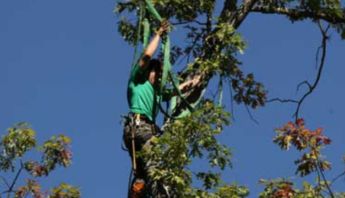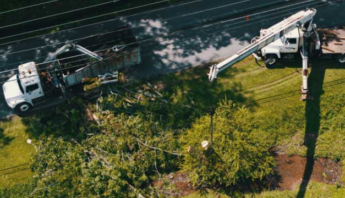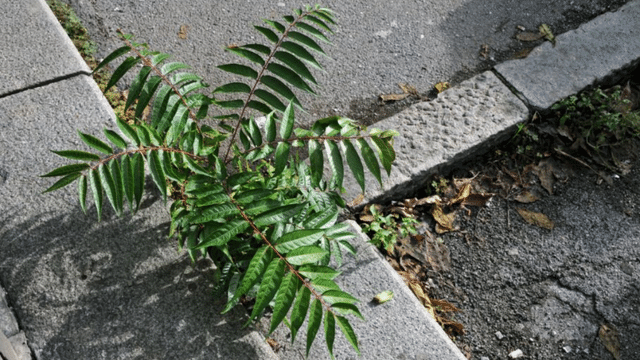
How To Spot 4 Invasive Trees Before They Ruin Your Property
In addition to the variety and breadth of natural species trees we have in the Tennessee Valley, there is also a growing presence of invasive trees. These are usually ones that are chosen for landscaping as a credit to their beauty but spread quickly, inevitably choking the natural species trees for real estate.
Here’s a quick rundown of the four invasive trees in our area to keep on your radar:
1. Chinese Privet
This is the macdaddy of invasives here. These trees originally came from, you guessed it, China to add to landscaping in the area as an alternative to the boxwood hedge because even though we classify it as a tree, it looks like a shrub.
 Identifying Chinese Privet
Identifying Chinese Privet
As touched on earlier, the privet is a shrub-like tree that is dense with long leafy branches making it a challenge to identify among the other types of hedges in our area. However, when it flowers in April through June it’s easy to spot with its clusters of tiny white flowers throughout the branches.
Why Chinese Privet is Bad
The privet can spread and produce quickly by dropping more seeds than natives like the river cane, mountain laurel, and hemlock that also grow near waterways making it faster growing and taking over the area, hence the “invasive” moniker.
Additionally, it grows taller than the native trees, shading out the sunlight they need to survive, which can have more serious implications for the ecosystem in the long term.
2. Mimosa Trees
The mimosa tree is also known as a Persian Silk, a testament to its flowers that resemble silks. They can grow anywhere from 16 to 52 feet tall and spread like wildfire! When its recognizable flowers fade, they can drop hundreds of seeds anywhere within the branches’ radius, taking over wherever they land.
 Identifying Mimosa Trees
Identifying Mimosa Trees
The most recognizable element of the mimosa tree is its pink silky flowers. By any definition they are both striking and beautiful, the two reasons many want these in their lawns. The flowers cover a variety of shades of pink and
Why Mimosa Trees are Considered Invasive
These trees provide a ton of shade, which is fantastic for a picnic in the summer but a real killer, literally, to your lawn as they block out the sunlight needed for grass to grow. The voracity and strength of the roots, which grow shallow and outwards from the trunk, can break through nearby pavement and driveways causing more serious damage to your property.
3. Royal Paulownia
The Royal Paulownia is also commonly known as princess trees or empress trees. Sounds fancy and elegant, right? Well it may look that way in full bloom but the big appeal of these trees is also its biggest downfall to the natural ecosystem they grow in.
The Problems with Princess Trees
Royal Paulownia are usually desired for their ability to be planted and grow up to 15 feet per year providing shade for outdoor activities quickly. That means this tree can reach maturity of 50 feet in less than 10 years, which is quite a feat.
That is also what makes them so dangerous because that growth rate is exponentially faster than the native oak, maple, hemlock and ash by sucking all the nutrients away and putting those natives at risk of wilting and dying.
 Spotting a Royal Paulownia
Spotting a Royal Paulownia
The leaves of these trees make it the easiest to spot, even without any flowers on it, because their leaves are the size of dinner plates – literally. The average leaf of an adult tree is six to 12 inches long and up to eight inches in diameter.
When the flowers are in bloom from late spring through summer months you can spot these princess trees by their densely populated purple flowers.
4. Ailanthus Trees
As with the rest of these invasive trees, the ailanthus also has a less mouthful-stye name and is casually referred to as the Tree of Heaven for its ability to grow to the sky quickly. (Noticing a theme with these invasives right? FAST growers.)
Its original appeal is rooted in use as a homeopathic remedy to a variety of digestive and reproductive problems.
Why Ailanthus Trees are Bad
In addition to their unusually quick growth, three feet per season, ailanthus trees can cause rashes on your skin similar to that of poison sumac. The roots operate similarly to the Royal Paulownia and can damage pavement, driveways and even your sewer system.
And if that isn’t enough on the negatives of these trees, the leaves are poisonous to dogs if consumed.
 How to Identify the Ailanthus
How to Identify the Ailanthus
The leaves of the Ailanthus are compound, meaning a single leaf has anywhere from 11 to 25 pointed leaflets stemming from it. The leaflets also have little teeth near the base of each.
Smell something funky near your property? Well it could be an ailanthus nearby. The broken stems and leaves of this tree give off a rank odor throughout all seasons.
Extreme caution should be taken when attempting to remove any of these trees. Without proper removal, you could end up spreading more seeds than you’re removing leading to an ongoing issue on your property.
Reach out to our team if you suspect you have one of these trees and we’ll ensure it’s eradicated properly.


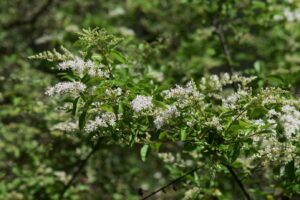 Identifying Chinese Privet
Identifying Chinese Privet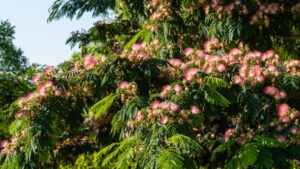 Identifying Mimosa Trees
Identifying Mimosa Trees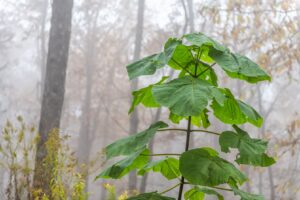 Spotting a Royal Paulownia
Spotting a Royal Paulownia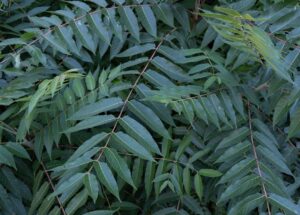 How to Identify the Ailanthus
How to Identify the Ailanthus